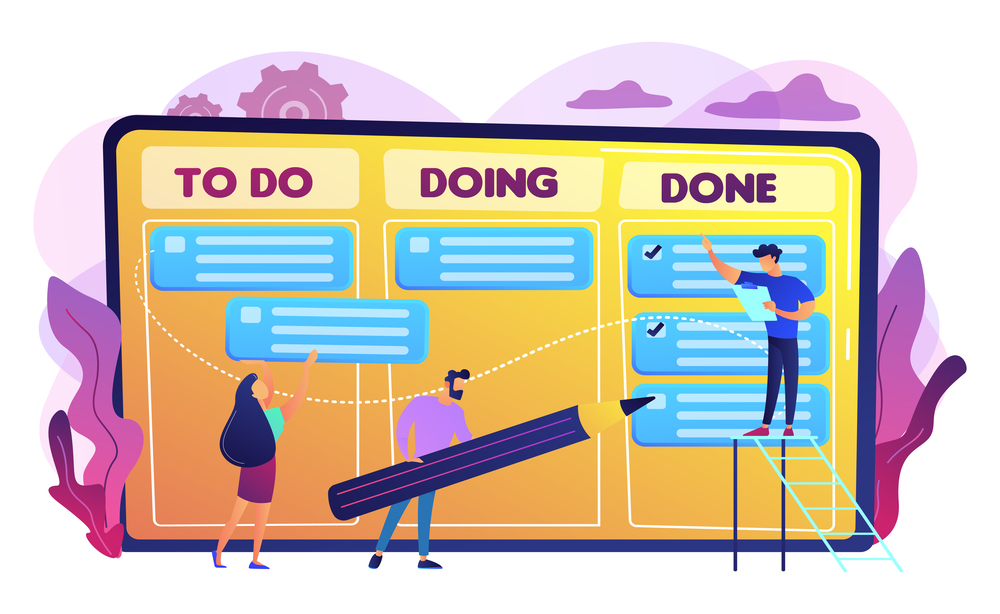A Comprehensive Guide To The Kanban Methodology

In today’s fast-paced world, businesses are constantly seeking ways to improve efficiency, productivity, and overall performancOne method that has gained significant traction in the realm of project management is Kanban.You might perceive your work environment as disorderly, particularly if you operate within an Agile industry known for its rapid pacIt's common to feel overwhelmed, especially when dealing with dysfunctional teams that hinder productivity and create challenges in managing tasks effectively. This is where the Kanban methodology steps in. While not a definitive solution to achieving organized workflows and optimal organizational efficiency, it serves as a valuable tool to navigate through such complexities. Here's a comprehensive guide to understanding the essence of Kanban within an Agile context.
What is Kanban?
Kanban is a visual project management method designed to help teams efficiently manage workflow and optimize processes. Originating from the Japanese manufacturing industry, particularly Toyota, Kanban has been adapted and embraced by various sectors worldwide, from software development to marketing and beyond.
Kanban vs. Agile
While both Kanban and Agile methodologies share common goals of delivering high-quality products efficiently, they differ in their approaches. Agile focuses on iterative development and customer collaboration, whereas Kanban emphasizes continuous delivery, visualizing workflow, and incremental improvement.
What is Kanban Methodology?
At its core, the Kanban methodology revolves around visualizing work, limiting work in progress (WIP), managing flow, making policies explicit, implementing feedback loops, and continuously improving collaboratively. It provides a flexible framework that enables teams to adapt to changing priorities and customer demands seamlessly.
A Brief History of Kanban
Kanban traces its roots back to the 1940s when Toyota introduced the concept of "just-in-time" production to streamline manufacturing processes. The term "Kanban" itself translates to "visual card" or "signal card" in Japanese, referring to the system of using cards to signal the need for production or replenishment of inventory.
Kanban Principles
1. Start with What You do Now: Kanban encourages teams to begin by visualizing their current workflow and processes.
2. Agree to Pursue Incremental, Evolutionary Change: Instead of implementing drastic changes, Kanban advocates for gradual improvements over time.
3. Respect the Current Process, Roles, and Responsibilities: Kanban respects existing processes and roles while fostering a culture of continuous improvement.
4. Encourage Acts of Leadership at All Levels: Kanban promotes a sense of ownership and accountability among team members, empowering them to take initiative and lead when necessary.
Benefits of the Kanban Methodology
1. Identifying Bottlenecks: Kanban helps identify and address bottlenecks in the workflow, enhancing efficiency.
2. Flexibility: Kanban offers flexibility to adapt to changing priorities and market demands.
3. Focus on Continuous Delivery: By visualizing workflow and limiting WIP, Kanban enables teams to focus on delivering value continuously.
4. Shortened Cycle Time: Kanban reduces cycle time by streamlining processes and eliminating waste.
5. Visual Metrics: Kanban provides visual metrics such as Control Charts and Cumulative Flow Diagrams, aiding in performance analysis and decision-making.
Kanban Practices
Visualizing the Flow of Work: Use Kanban boards to visualize workflow and track tasks from start to finish.
Limit Work-in-Progress: Set WIP limits to prevent overloading team members and maintain flow efficiency.
Managing Flow: Monitor and manage the flow of work to ensure smooth progress and timely delivery.
Make Policies Explicit: Clearly define policies and guidelines to govern workflow and decision-making.
Feedback Loops: Establish feedback loops to gather insights, identify areas for improvement, and adapt accordingly.
Improve Collaboratively, Evolve Experimentally: Foster a culture of collaboration and experimentation to continuously enhance processes and outcomes.
How Does Kanban Work? The Concept of a Kanban Board
1. Visual Signals: Kanban boards use visual cues, such as cards or sticky notes, to represent tasks and their status.
2. Columns: Columns on the Kanban board represent stages in the workflow, from backlog to completion.
3. Work in Progress Limits: WIP limits prevent tasks from piling up and ensure a steady flow of work.
4. Commitment Point: The commitment point signifies where new tasks are pulled into the workflow based on capacity and priority.
5. Delivery Point: The delivery point marks the completion of tasks and their delivery to the customer or next stage.
Kanban Tools
As work culture evolves, many organizations are increasingly inclined to centralize their information online, facilitating collaboration among team members. Similarly, adopting a Kanban-style approach to work has become popular. One effective way to implement this is by utilizing a Kanban tool. Some project management platforms integrate Kanban and Agile methodologies into their functionalities, enabling the creation of virtual Kanban boards accessible to entire teams. By visualizing the Kanban Board within a unified project platform, significant improvements in workflow and outcomes are anticipated.
Various digital tools are available to facilitate Kanban implementation, including Trello, Jira Software, Asana, and Stintar. Stintar’s Kanban board functionality offers a seamless integration of Kanban principles into agile project management, enabling teams to visualize workflow and manage tasks effectively. Stintar also offers a 1 year free trial for upto 5 users.
Conclusion
In conclusion, Kanban methodology provides a powerful framework for managing workflow, optimizing processes, and driving continuous improvement. By embracing Kanban principles and practices, teams can enhance productivity, reduce cycle time, and deliver value to customers more efficiently. Whether you're in software development, marketing, or any other industry, Kanban offers a flexible and scalable approach to project management that adapts to the evolving needs of your organization.